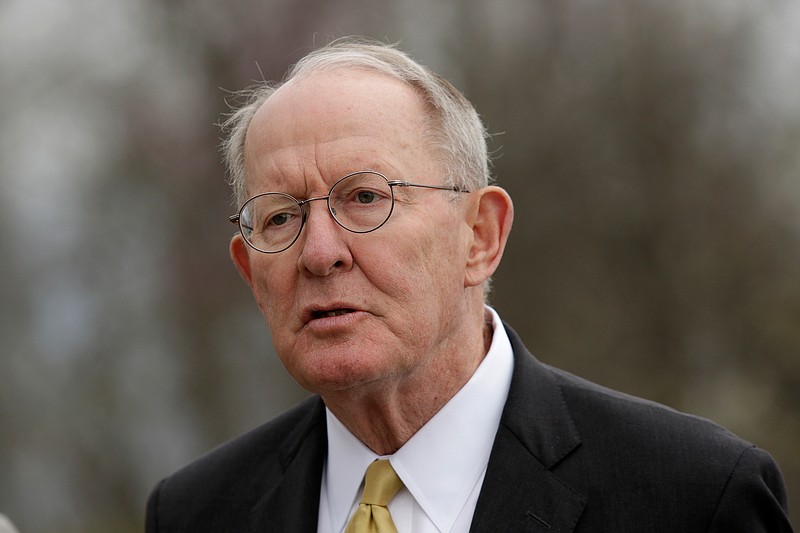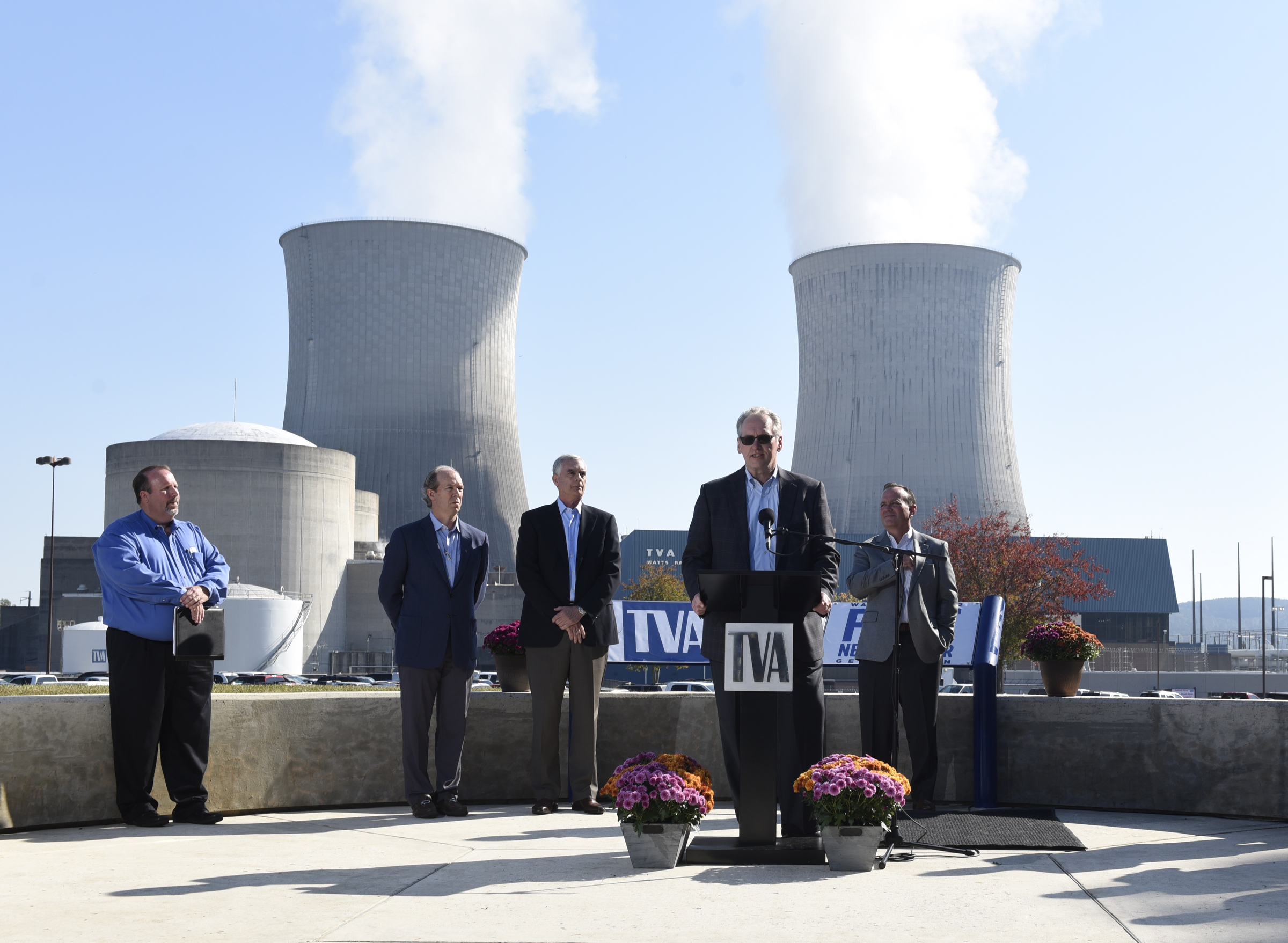When he created the Tennessee Valley Authority in 1933 to harness the power of the Tennessee River, Democratic President Franklin D. Roosevelt wanted the federal agency to be a benchmark for other utilities by offering cheap and abundant electricity.
Nearly a century later, Republican U.S. Sen. Lamar Alexander, R-Tennessee, says TVA is still a power model for the nation, especially compared with California, where power shortages during last week's heat wave forced rolling blackouts that left many temporarily in the dark.
"There's a lesson here," Alexander said of the outages that affected more than 3 million people. "California has closed its zero emission nuclear plants, closed low emission gas plants and relied on windmills and imported power from coal plants. TVA has led the nation in new nuclear plants, built new gas plants and limited the use of trendy, unreliable power."
Alexander, one of the biggest supporters of nuclear power and skeptics of windmills in the U.S. Congress, says TVA power is more reliable and priced below most of the country- and headed 2.1% lower this fall - because TVA relies more on nuclear reactors than windmills or solar panels.
"California's troubles are the direct result of its own poor policy choices," Alexander said. "One reason for the blackouts was the wind didn't blow so windmills didn't work."
Renewable energy from solar, wind and hydro is 36% of California's electric generation, or more than triple such power generation in TVA's seven-state area, even though TVA's original power source came from its 29 power-generating dams on the Tennessee River.
ROLLING BLACKOUTS
With power demand surging amid last week's heat wave, California had to import power from neighboring states with fossil fuel coal plants to try to deal with the blackouts. Wholesale prices rose during peak demand periods to as much as $3,800 per megawatt-hour, roughly 100 times the typical cost.
In contrast, Alexander said, TVA wholesale power rates are being cut for the second consecutive year and he called TVA "one of the cleaner utilities in terms of carbon emissions." TVA also maintained more than 99.999% average reliability in its power delivery to its 153 local power companies across its region.
Supporters of renewable energy insist the power differences between the Tennessee Valley and California are not as simple as what Alexander suggests, particularly as California has struggled with an oppressive, humid weather system that has sent temperatures into triple digits in many areas.
"It's far more complicated than the simple cheap shot Sen. Alexander likes to take at wind and solar," said Stephen Smith, executive director for the Southern Alliance for Clean Energy, an environmental group in Knoxville. "The unprecedented heat waves we're seeing in California in recent years does show how global warming is a growing threat and why we need to take more action to reduce carbon emissions. We need a balanced approach, and nuclear energy, which has had all kinds of its own problems, can't be the total answer."
Southern California Edison shut down its San Onofre nuclear plant in 2012 following a small radiation leak from a steam generator, and Pacific Gas & Electric plans to shut down its last reactor at the Diablo Canyon nuclear plant by 2025. California regulators determined that nuclear power was not economical with the growth of renewable energy sources, increased energy efficiency measures and the migration of more customers to new local suppliers under the state's community choice aggregation program.
Smith, who ran for the U.S. Congress as a Democrat in Knoxville in 1996, said he was glad to hear a Republican like Alexander favors the government-owned TVA over a privately-owned utility operating in a more competitive energy market in California.
"The competitive market system is still having some hiccups in California, but I applaud Sen. Alexander's support for the socialist system in the Tennessee Valley," Smith said.
TVA GOES NUCLEAR
In contrast to PG&E's retreat from nuclear energy, TVA has continued to invest in nuclear power. The federal utility built the last two nuclear reactors to be added to America's power grid at the Watts Bar Nuclear plant in 1996 and 2016 and it completed an upgrade of the Browns Ferry Nuclear plant last year that boosted its output at TVA's oldest nuclear plant by 14%.
TVA also applied to the Department of Energy under its advanced reactor development program to potentially build a number of small modular reactors on the Clinch River in Oak Ridge.
"TVA is one of the finest nuclear operating companies in the world," TVA President Jeff Lyash said last week, noting that over 40% of TVA's electricity now comes from nuclear power. "We're the first utility to have an early site permit for a small modular reactor site, and we think that developing this as an option for the people of the Tennessee Valley and for the people of the United States is a role we can serve."
NuScale Power announced Friday that the U.S. Nuclear Regulatory Commission has completed its final review phase for NuScale's small modular reactor design, but Lyash said TVA must still determine when and if it makes sense to proceed with actually building the new nuclear units.
NUCLEAR RENAISSANCE STALLS
TVA and other major Southern utilities have continued to pursue nuclear power while most other utilities have halted new construction and some are shutting down their older reactors.
More than a decade ago, Alexander urged America to pursue another "Manhattan Project" and build 100 new reactors to help deal with global warming and make the U.S. energy independent. But instead of expanding nuclear energy, U.S. utilities have reduced the number of operating commercial reactors in the United States from 104 in 2013 to 96 today.
The combined permitting process and new nuclear plant designs were expected to improve the cost and efficiency of building the next generation of nuclear power. But cost overruns at new nuclear plants still forced the cancellation of two new units that were being built at the Virgil C. Summer Nuclear Plant in South Carolina. The two new units being added at Plant Vogtle in Georgia are expected to end up costing more than twice what was originally budgeted.
To complete the final phase of building Watts Bar Unit 2 five years ago, TVA spent $4.7 billion, or nearly twice the projected $2.5 billion cost estimate made when the project was revived five years earlier.
"Nuclear power is simply too expensive and dangerous, and we certainly don't need to be pursuing an unproven design for small modular reactors," said Sandra Kurtz, an environmental activist in Chattanooga who is opposed to nuclear power.
TVA CUTS CARBON OUTPUT
Nuclear power has helped TVA to reduce most of its air pollution and carbon emissions over the past decade and a half. With its original generation from hydroelectric dams on the Tennessee River and its seven operating nuclear reactors - plus some limited purchased solar and wind power - more than 60% of TVA's electricity is now generated from carbon-free sources. TVA expects to reduce its CO2 emissions by at least 70% by 2030 from the 2005 levels.
TVA's carbon footprint per megawatt-hour of electricity was nearly 22% below the U.S. average last year and should continue to decline as TVA prepares to shut down its Bull Run Fossil Plant near Oak Ridge by 2023.
TVA's long-range power plan also envisions the utility adding from 5 to 14 gigawatts of solar power by 2035.
"We're now at a pace that we're looking at 1,000 megawatts of additional solar generation a year and that could accelerate from there," Lyash said last week. "But we have some break points in our plans that we have to pay attention to so that we make sure that we maintain a reliable system and we don't replicate what we're now seeing in California."
Contact Dave Flessner at dflessner@timesfreepress.com or at 423-757-6340.

